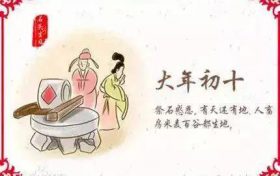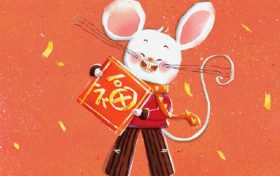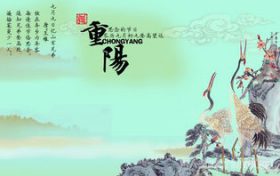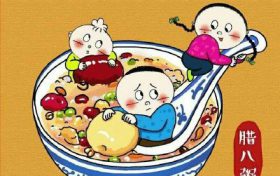祝福语365网络整理有关中秋节的英文介绍有哪些,文章围绕有关中秋节的英文介绍有哪些,建党节进行说明,正文内容是有关中秋节的英文介绍有哪些 Mid-Autumn Day 中秋节 &e…下面随小编一起来看下有关中秋节的英文介绍有哪些吧。
有关中秋节的英文介绍有哪些
Mid-Autumn Day 中秋节 Mid-Autumn Day is a traditional festival in China. Almost everyone likes to eat mooncakes on that day. Most families have a dinner together to celebrate the festival. A saying goes, "The moon in your hometown is almost always the brightest and roundest". Many people who live far away from homes want to go back to have a family reunion. How happy it is to enjoy the moon cakes while watching the full moon with your family members.
中秋节英语介绍 "Zhong Qiu Jie", which is also known as the Mid-Autumn Festival, is celebrated on the 15th day of the 8th month of the lunar calendar. It is a time for family members and loved ones to congregate and enjoy the full moon - an auspicious symbol of abundance, harmony and luck. Adults will usually indulge in fragrant mooncakes of many varieties with a good cup of piping hot Chinese tea, while the little ones run around with their brightly-lit lanterns. 农历八月十五日是中国的传统节日——中秋节。在这天,每个家庭都团聚在一起,一家人共同观赏象征丰裕、和谐和幸运的圆月。此时,大人们吃着美味的月饼,品着热腾腾的香茗,而孩子们则在一旁拉着兔子灯尽情玩耍。 "Zhong Qiu Jie" probably began as a harvest festival. The festival was later given a mythological flavour with legends of Chang-E, the beautiful lady in the moon. 中秋节最早可能是一个庆祝丰收的节日。后来,月宫里美丽的仙女嫦娥的神话故事赋予了它神话色彩。 According to Chinese mythology, the earth once had 10 suns circling over it. One day, all 10 suns appeared together, scorching the earth with their heat. The earth was saved when a strong archer, Hou Yi, succeeded in shooting down 9 of the suns. Yi stole the elixir of life to save the people from his tyrannical rule, but his wife, Chang-E drank it. Thus started the legend of the lady in the moon to whom young Chinese girls would pray at the Mid-Autumn Festival. 传说古时候,天空曾有10个太阳。一天,这10个太阳同时出现,酷热难挡。弓箭手后翌射下了其中9个太阳,拯救了地球上的生灵。他偷了长生不死药,却被妻子嫦娥偷偷喝下。此后,每年中秋月圆之时,少女们都要向月宫仙女嫦娥祈福的传说便流传开 来。 In the 14th century, the eating of mooncakes at "Zhong Qiu Jie" was given a new significance. The story goes that when Zhu Yuan Zhang was plotting to overthrow the Yuan Dynasty started by the Mongolians, the rebels hid their messages in the Mid-Autumn mooncakes. Zhong Qiu Jie is hence also a commemoration of the overthrow of the Mongolians by the Han people. 在14世纪,中秋节吃月饼又被赋予了一层特殊的含义。传说在朱元璋带兵起义推翻元朝时,将士们曾把联络信藏在月饼里。因此,中秋节后来也成为汉人推翻蒙古人统治的纪念日。 During the Yuan Dynasty (A.D.1206-1368) China was ruled by the Mongolian people. Leaders from the preceding Sung Dynasty (A.D.960-1279) were unhappy at submitting to foreign rule, and set how to coordinate the rebellion without it being discovered. The leaders of the rebellion, knowing that the Moon Festival was drawing near, ordered the making of special cakes. Packed into each mooncake was a message with the outline of the attack. On the night of the Moon Festival, the rebels successfully attacked and overthrew the government. What followed was the establishment of the Ming Dynasty (A.D. 1368-1644). Today, moon cakes are eaten to commemorate this event. 在元朝,蒙古人统治中国。前朝统治者们不甘心政权落入外族之手,于是密谋策划联合起义。正值中秋将近,起义首领就命令部下制作一种特别的月饼,把起义计划藏在每个月饼里。到中秋那天,起义军获取胜利,推翻了元朝,建立明朝。今天,人们吃月饼纪念此事。
月饼传说
月饼象征团圆,是中秋祭月和拜土地公的必备祭品。而中秋节吃月饼的习俗,是由元朝末年流传下来的。元朝末年,汉人打算团结起来反抗蒙古人的统治,却苦于无从传递消息。后来刘伯温想出一条计策,到处散布流言,说有冬瘟流行,除非家家户户都在中秋节买月饼来吃,才能避免。人们买了月饼回到家中,发觉里面藏着纸条,上面写着:“中秋夜,杀鞑子,迎义军!” 于是众人纷纷起义反抗统治者,中秋节吃月饼的习俗就是这样留下来的。无锡人中秋早晨一般都吃红烧玫瑰糖芋头,据说也与此有关。相传蒙古灭宋之后,民族压迫深重,汉人时刻都想反抗。有一年,大家约好中秋之夜一齐动手。为了厌胜,人们要吃红烧芋头,象征“鞑子”人头落地,这就是现在中秋节吃糖芋头的来历。这个传说在潮汕各地则变异为:当时元朝统治者规定,每户潮人家都要住一个蒙古兵,受汉人供养,监视汉人的行动,并且只允许三家共用一把菜刀。老百姓恨极了,便趁着中秋节吃月饼的机会,把相约举事的纸条,放在月饼馅子里。潮人取芋头与“胡头”谐音,且形似人头,因此每至中秋,则以芋头来祭奠祖先,历代相传,至今犹存。广东各地有中秋节吃芋头的习俗,据说是纪念元末杀鞑子的历史故事。中秋节杀鞑子后,便以其头祭月,后来改以芋头代替。至今广东人剥芋皮时仍称为“剥鬼皮”。




